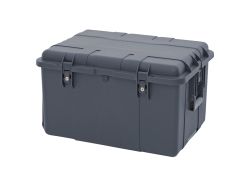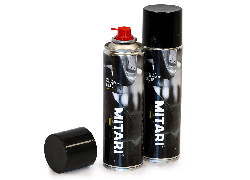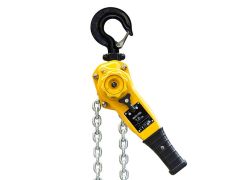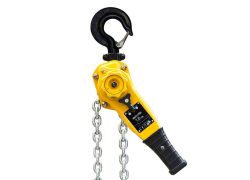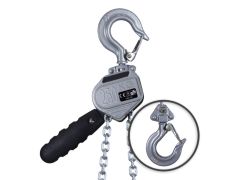This is how a lever hoist works
You operate the ratchet hoist by moving the lever. The button on the control knob can be switched to three positions: neutral, up, or down. Where a manual chain block can only be used vertically, the ratchet hoist can be used in 360 degrees. For this reason, the hoist is used for lifting, towing, and tensioning.
The right lever hoist
The most important thing when choosing a hoist is of course first and foremost the safe working load of the hoist. The weight of the load must not exceed the maximum working load of the ratchet hoist. Even when this happens once, things can go wrong. In our range, you will find ratchet hoists from the MRO and MRT series. These ratchet hoists are lightweight and have a durable steel construction with a metal powder-coated housing. The lever hoists are equipped with a swiveling top and bottom hook. The biggest difference between the two series is whether it is overload protection. The MRO has overload protection, which means that the chain slips in the lifting direction when the maximum working load is exceeded. At that point, the load can only be lowered safely. This protects the hoist and ensures more safety on the work floor. Through our online store, you can put together the hoist yourself with the desired maximum workload which can be up to 9,000 KG, and a lifting height that can be up to ten meters. Is your desired lifting height not listed? We customize all lever hoists in our warehouse, which makes it possible to adjust the lifting height.
Lever hoists with load cell
The MRO-S model has a built-in load cell. This allows you to measure the load and force accurately and safely. The built-in load cell ensures that you can optimally use the lifting height. This model of lever hoist can be an essential investment to reduce risk and increase productivity.
Storage and maintenance
Proper storage is important to be able to use the lever hoist for a maximum period. The last thing you want is to reduce its useful life due to careless storage. In our range, you will also find storage boxes that are suitable for the ratchet hoist. Equipped with handles, a lock, and wheels, for even more convenience!
Tips for using a lever hoist
- When using a lever hoist, you should never extend the lever to get more power.
- The hoist must always be labeled with the maximum working load. If this label is not present, you may not use the hoist.
- Always check whether and when the ratchet hoist was last inspected.
- Always use a strong attachment point.
- Make sure that no persons can get caught between the load and the construction.
- Never leave a load in the hook when you leave the area
- Never leave a load in the hook when you leave the room.
Inspection before use
- Check for visible wear.
- Is the chain still in good condition? Is there damage or deformation?
- Do the hook latches work properly and are they not damaged?
- Check if it self-braking mechanism works.
Advice and customization
Are you not sure, after reading this blog, which hoists suit your lifting job best? Please contact one of our advisors. They can also help you if you need a customized lever hoist.




